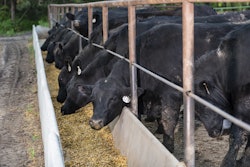
USDA’s December WASDE: Neutral Corn and Soybeans
The USDA’s December WASDE report released on Tuesday made no adjustments to the U.S. corn and soybean ending stocks figures from November.
Corn: The USDA made no adjustments to the U.S. supply or demand numbers.
Soybeans: The USDA made no adjustments to the U.S. supply or demand numbers. USDA raised domestic soybean meal use by 250,000 short tonnes and reduced exports by the same amount.
Wheat: The government raised the all-wheat export figure by 25 million bushels (MBU), lowered the imports figure by 15 MBU which reduced the ending stocks number to 974 MBU.
Durum, HRW and HRS exports were all raised.
USDA’s sub-1 billion bushel carryout would be the smallest ending stocks figure since 2014/15.
USDA lowers Australia and Argentina wheat production by 1.5 million metric tonnes (MMT) and 1.0 MMT. USDA raises EU and Russian production by .5 MMT each.
FBN’s Take On What It Means: Given the neutral US corn and soybean reports, we believe that the USDA will make any production related adjustments in the January WASDE report. We believe that reducing the all-wheat ending stocks number is directionally supportive but does not do much to change the big picture.
Brazil’s CONAB Estimates Soybean Crop At 121 Million Metric Tonnes
Brazil’s national food supply and agricultural statistics agency known as CONAB presented their corn and soybean production estimates.
Brazil’s soybean crop is estimated at 121.09 million metric tonnes (MMT).
Soybean production is expected to increase by 3.5% from the previous year.
The USDA estimates that Brazil’s soybean crop will be 123.0 MMT
CONAB raised their all-corn production to 98.1 MMT
The corn production figure is down from 100 MMT the previous year.
Brazil harvests 2 corn crops.
The second corn crop, known as the safrinha, is the largest of the two and is estimated to decline by 2.24 MMT from 2018.
FBN’s Take On What It Means: We believe that CONAB’s Brazilian soybean production estimates represent a material growth from the previous year, which can be a threat to the US soybean export program and a negative for the US farmer. We believe that CONAB’s softening corn production estimates can be a positive for US corn exports and the US farmer.
The risk of trading futures, hedging, and speculating can be substantial. FBN BR LLC (NFA ID: 0508695)














